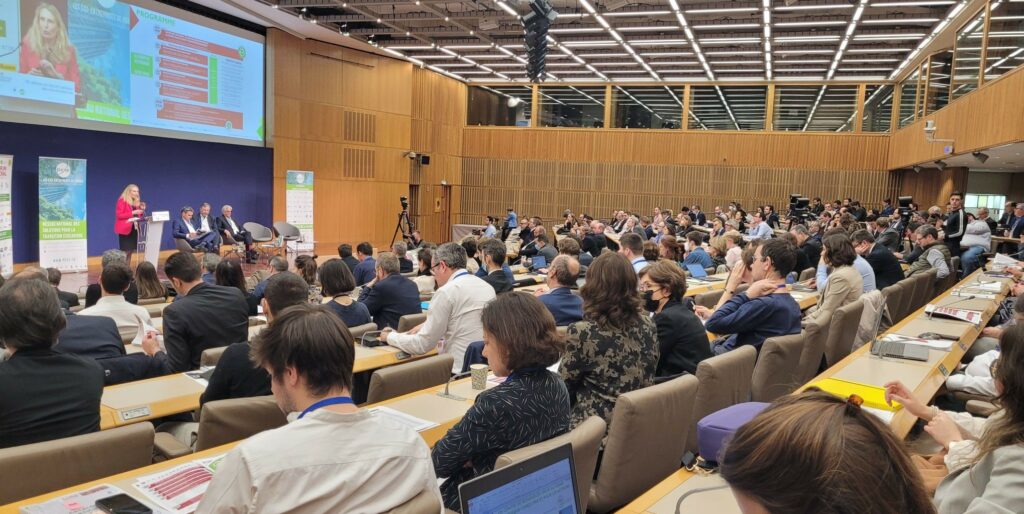Events, whether cultural, professional, or social, often leave a substantial environmental footprint. From waste generation to high energy consumption and participant transportation, the event industry is a major contributor to global greenhouse gas emissions. With climate change and sustainability taking center stage, the urgency for the events industry to adopt eco-friendly practices is higher than ever. By 2025, transitioning to sustainable event management will be essential for staying relevant and responsible.
This guide provides a comprehensive overview of the environmental impact of events, why switching to a sustainable model is not just beneficial but necessary, and actionable strategies to minimize your carbon footprint. We’ll also introduce tools to measure this transition and feature real-world examples of major events that are leading the way in sustainability.
Table of contents
Understanding the environmental impact of events
Events have a significant impact on the environment, often overlooked in traditional planning. Large gatherings—whether conferences, festivals, or trade shows—can produce massive amounts of waste, consume vast energy resources, and require extensive participant travel, which contributes heavily to CO2 emissions.
Consider these facts:
🚮 Waste: A single event can generate between 1 and 2 kg of waste per participant, with most of it coming from single-use plastics and food waste.
🚗 Transportation: Travel to and from events typically accounts for 40% to 70% of the total carbon footprint, depending on location.
⚡ Energy: Even digital events, often considered “greener,” can consume up to 30% more energy compared to traditional formats due to higher server demands and streaming needs.
For instance, the 2012 London Olympics generated around 3 million tons of CO2, primarily from participant transportation and large-scale infrastructure construction. This example underscores the urgent need for a paradigm shift in event management.

These numbers highlight the urgent need to shift toward an eco-friendly approach in event planning. By 2025, it’s essential for organizers to embrace sustainable practices to cut down on environmental impact and support a greener future.
Why go green?
Eco-friendly event: what are we talking about?
An eco-friendly event is defined as a gathering that incorporates sustainable practices throughout its planning and execution to minimize its environmental impact and promote social well-being.
This includes factors such as waste reduction, resource management, supporting local economies, and engaging participants in sustainability efforts.
3 good reasons to make your event eco-friendly
The question isn’t why switch to eco-friendly events—it’s why not? The benefits of sustainable event management go beyond environmental responsibility; they offer tangible advantages for businesses, brands, and attendees.
Lower Operational Costs
💸 Implementing sustainable practices can reduce costs by up to 30%. By optimizing resource use, minimizing waste, and adopting renewable energy solutions, you can save significantly on logistics, energy, and waste management.
Enhanced Brand Reputation
🌟 Sustainability is no longer just a buzzword. Consumers are demanding it. According to Nielsen, 66% of global consumers are willing to pay more for products and services that are aligned with sustainable values. Hosting an eco-friendly event not only reduces environmental impact but positions your brand as a forward-thinking leader
Improved Participant Engagement
🗣️ Sustainable events attract a conscious audience. In a survey by Booking.com, 72% of travelers stated that they are more likely to attend events committed to environmental responsibility. By aligning your event with eco-friendly values, you create deeper engagement and loyalty among participants.
The carbon footprint: your baseline for action
Understanding your event’s carbon footprint is the first step towards reducing its environmental impact. A carbon footprint assessment quantifies the greenhouse gas emissions of an event, covering all activities from participant travel and energy use to catering and waste management. It is crucial not only for meeting regulatory requirements but also for demonstrating a genuine commitment to sustainability.
To gain a comprehensive understanding of an event’s environmental impact, emissions are typically categorized into three scopes:
🏭
SCOPE 1
Direct emissions generated by the event
⚡
SCOPE 2
Emissions associated with the energy purchased for the event
🚌
SCOPE 3
Other upstream or downstream emissions related to the event
Key strategies for organizing eco-friendly events
Transport and accommodation
Selecting a sustainable venue and optimizing transportation are foundational strategies for reducing your event’s carbon footprint. Here’s how to make smarter choices:
- Choose accessible venues: Select locations that are easily reachable by public transportation.
- Promote green transport: Encourage carpooling, cycling, and public transport use.
- Provide shuttles: For remote venues, arrange shuttles to minimize the number of individual trips.
For every 10 km traveled, an individual typically consumes:
🚴♂️ Bicycle: 0 kg CO₂e
🚆 Train (TVG): 0.03 kg CO₂e
🚗 Carpool (thermal): 1.09 kg CO₂e
🚌 Bus (thermal): 1.13 kg CO₂e
✈️ Plane (short-haul): 2.59 kg CO₂e
Additionally, it is essential to select eco-friendly accommodations that implement sustainable practices, such as recycling, the use of renewable energy, and waste reduction initiatives.
The Domaine de Longchamp in Paris is an ideal eco-friendly venue, offering renewable energy, sustainable practices, and a mission aligned with environmental and social responsibility.

Catering
Catering is another major source of emissions in event planning. Opting for sustainable food options can significantly reduce your event’s environmental footprint.
👨🌾 Local and seasonal products: Support local farmers and reduce emissions from food transportation.
♻️ Waste reduction: Implement portion control, and redistribute leftovers to minimize food waste.
🥗 Plant-based menus: Including vegan and vegetarian options can dramatically lower the carbon footprint associated with meat production.
Waste management and awareness
A robust waste management strategy is crucial for minimizing environmental impact. Implement clear waste sorting and recycling systems, use compostable materials, and educate participants on proper disposal methods.
- Use reusable items: Rent cups, plates, and cutlery instead of opting for disposable versions.
- Educate and engage: Inform staff and attendees about the importance of proper waste segregation and sustainability practices.

Equip yourself with the right tools
To successfully pull off an eco-friendly event, it’s crucial to have the right tools to measure and track your carbon footprint.

Implementing eco-friendly strategies is easier with the right tools. Carbon tracking platforms like Greenstarter provide a comprehensive solution for collecting and analyzing data across transportation, catering, energy, and more. With Greenstarter, event organizers can visualize their carbon footprint, pinpoint areas for improvement, and take targeted action to reduce emissions.
With the right tools, organizers do more than just measure their impact—they make a real commitment to sustainability 🌱
Meet an expert to discover the solution.
Learning from success stories: major eco-friendly events
Known for its sustainability initiatives, Glastonbury has eliminated single-use plastics, implemented advanced recycling systems, and integrated on-site composting. The festival proves that large-scale events can prioritize environmental values without compromising the experience.
Key takeaway 👉 Major music festivals can lead the way by balancing entertainment with sustainability.

This professional gathering prioritizes local suppliers, uses recycled materials, and focuses on promoting sustainable business practices.
Key takeaway 👉 Even business events can drive change by modeling eco-friendly behavior and engaging industry leaders in sustainability dialogues.

By using electric vehicles for transportation and promoting sustainable practices in film production, Cannes has demonstrated that even high-profile global events can transition to greener practices.
Key takeaway 👉 The film industry can adopt sustainable solutions without compromising on prestige or impact.

Transitioning to sustainable event planning by 2025 is not just a trend—it’s a necessity. Recognizing the environmental impact of events, adopting best practices, and leveraging technology to measure and reduce emissions will soon be the industry standard. By drawing inspiration from successful examples and implementing actionable strategies, you can transform your event into a model for sustainability.
Ready to lead the change? Book a demo today and discover how you can create events that leave a positive mark on both your audience and the planet. Let’s redefine event planning and make every event a meaningful contribution to a greener, more sustainable world 🌱







